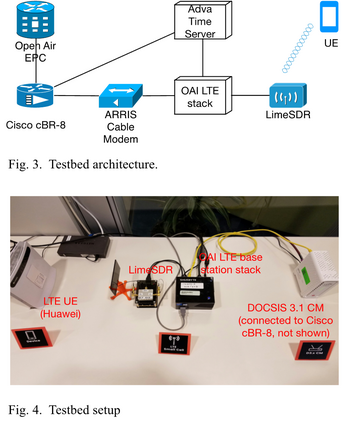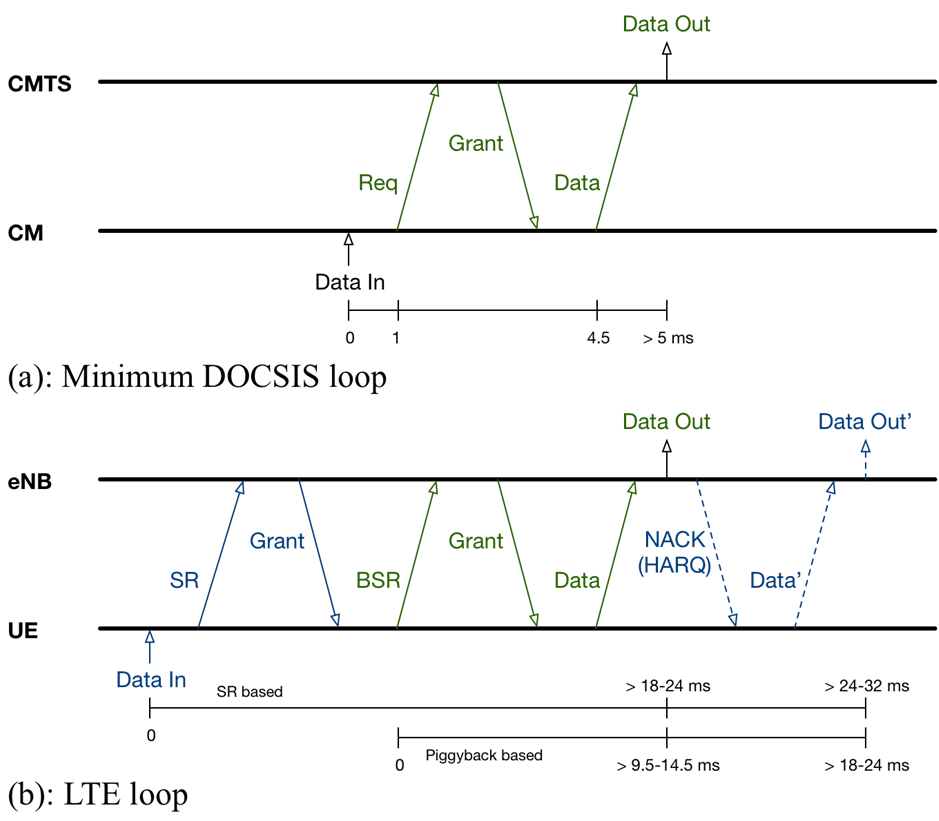The mobile network operators (MNOs) are looking into economically viable backhaul solutions as alternatives to fiber, specifically the hybrid fiber coaxial networks (HFC). When the latencies from both the wireless and the HFC networks are added together, the result is a noticeable end-to-end system latency, particularly under network congestion. In order to decrease total system latency, we proposed a method to improve upstream user- to-mobile core latency by coordinating the LTE and HFC scheduling in previous papers. In this paper, we implement and optimize the proposed method on a custom LTE and DOCSIS end-to-end system testbed. The testbed uses the OpenAirInterface (OAI) platform for the LTE network, along with Cisco's broadband router cBR-8 that is currently deployed in the HFC networks around the world. Our results show a backhaul latency improvement under all traffic load conditions.
翻译:移动网络运营商(MNOs)正在研究经济上可行的回航解决方案,作为纤维替代品,特别是混合纤维共轴网络(HFC)的替代品。当无线网络和氢氟碳化合物网络的延迟时间加在一起时,结果是一个明显的端到端系统延迟时间,特别是在网络拥堵的情况下。为了减少整个系统延迟时间,我们提出了一个方法,通过协调以往文件中的LTE和HFC列表,改善上游用户到流动核心的延时。在本文中,我们实施并优化了关于LTE和DOCISAS端到端系统测试台的拟议方法。测试台使用LTE网络的OpenAir Interface平台,以及目前部署在世界各地的HFC网络的Csco宽带路由器cBR-8。我们的结果显示,在所有交通负荷条件下,LTE和DOSISE终端到端系统测试台都出现了逆向拉。









